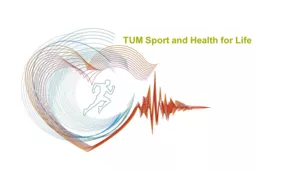Sports rehabilitation training is used in the field of orthopedics for sports injuries and overuse complaints. The goal is the complete restoration of physical resilience and safe return to previous activities - at least at the same or even higher performance level. This is achieved through pathology-specific training and optimal stress management, from the acute phase to the return to sport. In addition, preventive aspects are taken into account during training to keep the risk of recurrence of the problem low.
For pathology-specific training, classic machines are used, but also exercises with, for example, the patient's own body weight, resistance bands, dumbbells and medicine balls. The future field of work is in the area of rehabilitation and health centers, fitness studios as well as personal training.
The course is modular. Module 1 includes, within a live webinar, theoretical basics of rehabilitation training. Modules 2- 4 take place in presence. In addition to theoretical background on the various pathologies, the focus is on functional diagnostics and specific practical training after sports injuries and overuse complaints.
The basic module (module 1) is the prerequisite for the following modules. Subsequently, the modules 2 - 4 are carried out compactly within two attendance days.
"Sport Rehab Trainer - Orthopedics" : Basic Module (Live Zoom - Webinar) + Module 2-4 (Presence)
Fee: (Module 1-4): 695 Euro 630 Euro (reduced fee for students and trainees).
Modul 1: Basic Module (online)
Statistics of the most common sports injuries and overuse complaints in common sports, basics of pain physiology, basics of connective tissue physiology - specific stimulation for muscles, tendons, ligaments, cartilage and bones, basics of rehab training and creation of step-by-step plans, optimal load management in rehab, training in the healing phases.
Module 2: Knee & Ankle Joint
Many sports injuries and overuse complaints relate to the knee and ankle joint. Anterior cruciate ligament rupture is one of the most consequential injuries, as it is associated with a long downtime and often permanent physical performance losses. Supination trauma, on the other hand, is one of the most common injuries. However, unfavorable rehabilitation can also lead to permanent complications with this one. Tendon injuries, on the other hand, occur more frequently in both joints. These include runners knee, jumpers knee and achillodynia. In this module, you will learn how to train specifically for these problems.
Module 3: Lumbar, pelvic, hip region
The lumbar spine, pelvis and hip joints are closely functionally related. Therefore, both functional diagnosis and rehabilitation training must take this entire complex into consideration.
Impingements, instabilities, mobility limitations, and loss of stability/strength often occur in this region. Diagnoses are often commonly lumbago (lumbar spine syndrome) or athlete's groin. Targeted training can often completely eliminate both the causes and the resulting symptoms.
Many sports injuries and overuse complaints relate to the knee and ankle joint. Anterior cruciate ligament rupture is one of the most consequential injuries, as it is associated with a long period of downtime and often permanent loss of physical performance. Supination trauma, on the other hand, is one of the most common injuries. However, unfavorable rehabilitation can also lead to permanent complications with this one. Tendon injuries, on the other hand, occur more frequently in both joints. These include runners knee, jumpers knee and achillodynia. In this module, you will learn how to train specifically for these problems.
Module 4: Chest, neck, shoulder region
As with the lumbar-pelvic-hip region, the thoracic spine, cervical spine and shoulders are also closely functionally related. Therefore, both functional diagnostics and rehabilitation training must also take this entire complex into consideration.
Impingements, instabilities, dislocations, mobility restrictions and loss of stability/strength often occur here. The diagnoses are often general cervalgia (cervical spine syndrome) or throwing shoulder. Targeted training can often completely eliminate both the causes and the resulting symptoms.
Overview:
Basic Module (Module 1): Basics of rehabilitation training
- Statistics of the most common sports injuries and overuse complaints in common sports.
- Basics of pain physiology
- Basics of connective tissue physiology - specific stimulation for muscles, tendons, ligaments, cartilage and bones
- Basics of rehab training and creation of step plans
- Optimal load management in rehab
- Training in the healing phases
Module 2-4:
- Functional anatomy and biomechanics
- Introduction to functional diagnostics
- Pathology-specific and comprehensive training
- Preparation of home exercise programmes
- Return-to-Sport-Assessment
- Examples from practice
Target group:
Sport and health science students from the 3rd semester, persons with state-recognized training in the field of exercise, e.g. Sports scientists, physiotherapists, sports and gym teachers or doctors, and other interested parties who fulfil the prerequisites for attending.
Language of Instruction:
German
Participants:
min. 6 participants
Course Instructor:
Patrick Hartmann
Workload pro module:
34 units of training in attendance, 2 ECTS
Certificate:
TUM Certificate "Sports Rehab Trainer" after successful participation
Is there no announced date for this course, is the course booked out, or does the date not suit you? You can put your name on the list of prospects without any obligation and you will be contacted as soon as a new course date is announced.



